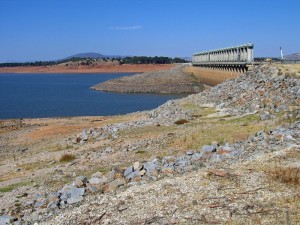Water in a Climate Change World
 In the 2008 book, Dry Spring – the Coming Water Crisis of North America, Chris Wood detailed the scope of impacts we could anticipate as more volatile and extreme weather patterns become the norm. Wood, who continues to track climate change as a research collaborator, author and journalist, revisited the book in a recent interview, and noted that climate change impacts projected at the time of publication have largely proven true.
In the 2008 book, Dry Spring – the Coming Water Crisis of North America, Chris Wood detailed the scope of impacts we could anticipate as more volatile and extreme weather patterns become the norm. Wood, who continues to track climate change as a research collaborator, author and journalist, revisited the book in a recent interview, and noted that climate change impacts projected at the time of publication have largely proven true.Some geographic areas continue to receive more water than they need, and it’s easy to imagine transferring surplus water to drought regions, especially north to south. Wood cautions that this is largely fiction – the scale and cost of infrastructure to make these connections, as well as the political ramifications are apt to be insurmountable. In particular, Wood cited the common misperception in the US that Canada has a uniform over-abundance of water that could potentially be shared in a worst-case scenario; in fact, precipitation is greatest in the northern provinces, further from the US.
If the water can’t be transferred, population and jobs will naturally migrate over time from areas of water scarcity to areas of relatively greater abundance.
Wood asserted that a key to water management will be to think more broadly about landscapes – urban and non-urban – as potential hydrologic resources that warrant protection.
While some communities already incentivize low-impact development and other stormwater management practices, the capacity for water retention, runoff, and groundwater recharge associated with all kinds of land uses and land covers (including rooftops) warrant scrutiny. In other words, water management will need to become a stronger driver in land-use planning.
Considering that roughly 70 percent of all water use is agricultural, current efforts to achieve water savings through urban conservation may be misguided. The need for more efficient irrigation has created a market opportunity for green tech companies. The Cleantech Group, a market research firm, tracks 53 companies globally that are identified as “smart irrigation” providers.
However, a decrease in irrigation and agricultural runoff can also have the unintended consequence of reducing groundwater recharge, creating challenges for adjacent landowners.
Wood anticipates that farmers will ultimately need to rethink their crop choices to maximize food production using the least water.
Research is currently underway at the University of British Columbia to evaluate the food value per unit of water input for globally traded commodities. As drought affects more and more of the countries that currently provide the bulk of the global food supply, careful crop selection will be imperative to meet the growing demand of an expanding population.
You can return to the main Market News page, or press the Back button on your browser.

